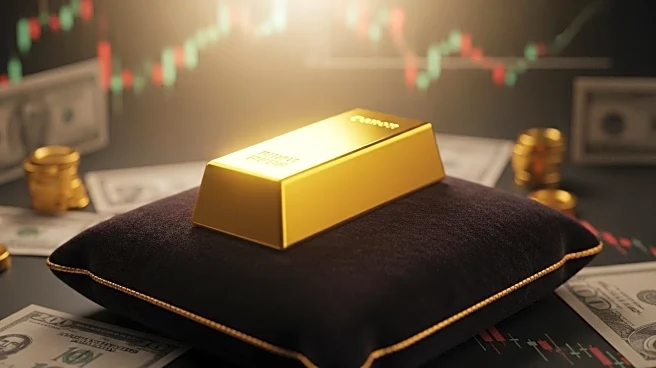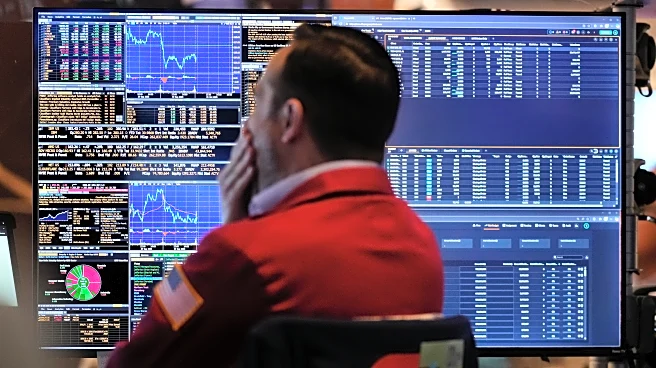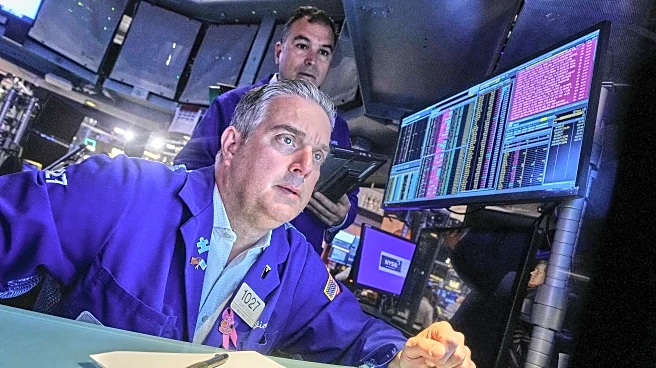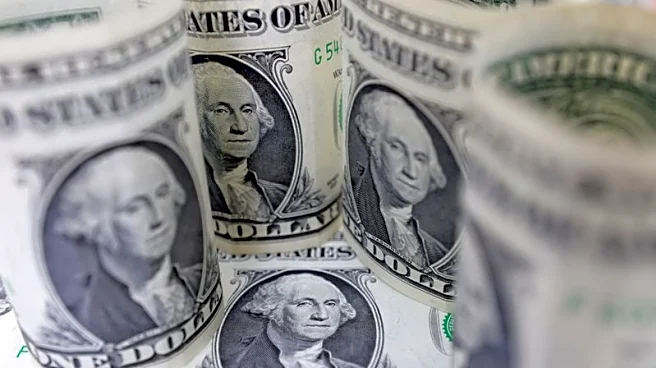What is the story about?
What's Happening?
Gold prices have surged to a record high above $4,100 per ounce, driven by increased expectations of a U.S. Federal Reserve rate cut and renewed trade tensions between the United States and China. Spot gold rose to $4,128.49 per ounce, marking a significant increase from previous levels. The anticipation of a rate cut by the Federal Reserve has bolstered safe-haven demand for gold, as investors seek stability amid geopolitical and economic uncertainties. Additionally, silver prices have also reached an all-time peak, supported by similar factors. Analysts suggest that the ongoing trade negotiations between the U.S. and China, coupled with potential dovish surprises from the Federal Open Market Committee (FOMC) meeting, could further influence gold prices.
Why It's Important?
The rise in gold prices reflects broader economic and geopolitical concerns, particularly the impact of U.S.-China trade tensions on global markets. As investors turn to gold as a safe-haven asset, the surge indicates a lack of confidence in other investment avenues amid uncertainty. The potential rate cut by the Federal Reserve could lower borrowing costs, influencing economic activity and investment strategies. This development is significant for industries reliant on stable economic conditions, as fluctuations in gold prices can affect commodity markets and investment portfolios. The situation underscores the interconnectedness of global trade policies and financial markets, highlighting the potential for significant shifts in economic strategies.
What's Next?
Investors are closely monitoring upcoming events, including Fed Chair Jerome Powell's speech at the NABE annual meeting, which may provide further insights into the Federal Reserve's monetary policy direction. The anticipated meeting between President Trump and Chinese leader Xi Jinping in South Korea could also impact trade negotiations and market dynamics. Analysts predict that gold prices may continue to rise, potentially reaching $5,000 per ounce by 2026, depending on the outcomes of these discussions and economic policies. Stakeholders in the financial and commodity markets are likely to adjust their strategies based on these developments.
Beyond the Headlines
The surge in gold prices highlights the broader implications of geopolitical tensions and monetary policy decisions on global financial stability. As central banks and investors navigate these uncertainties, the role of gold as a traditional safe-haven asset is reaffirmed. The situation also raises questions about the long-term impact of trade policies on economic growth and international relations, emphasizing the need for strategic planning and risk management in volatile markets.
AI Generated Content
Do you find this article useful?















